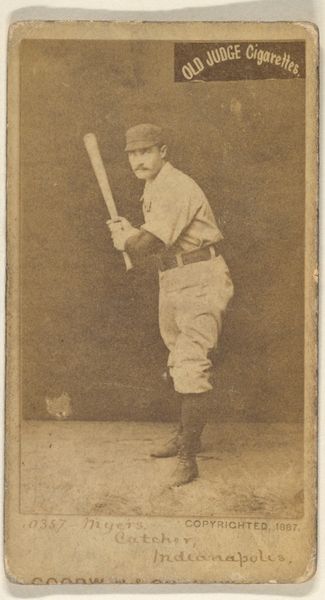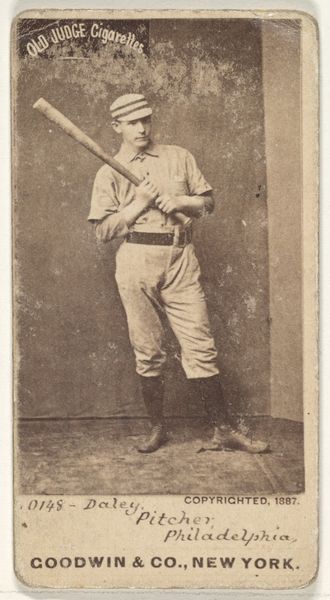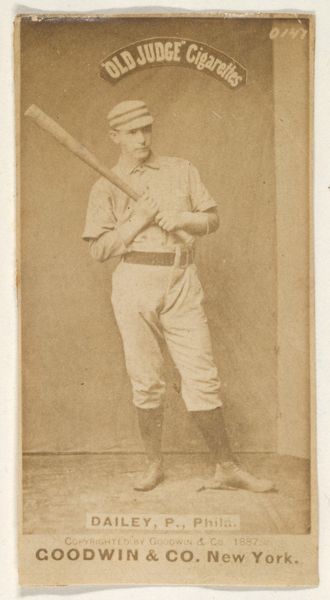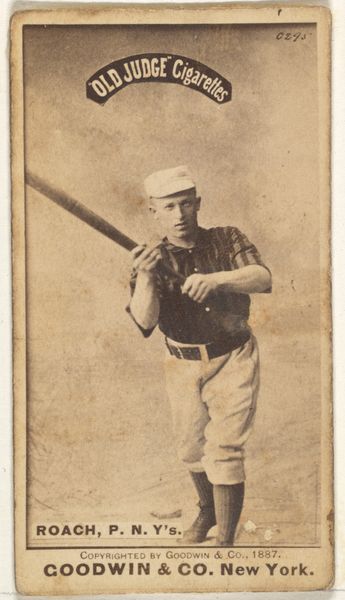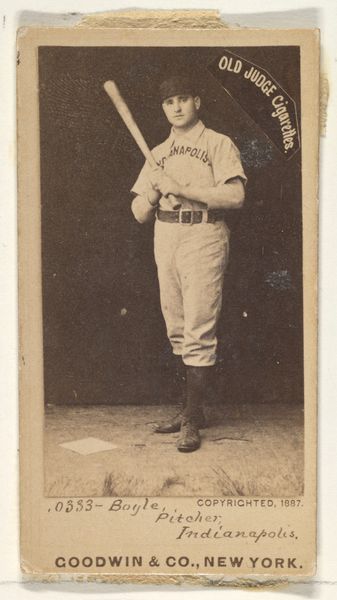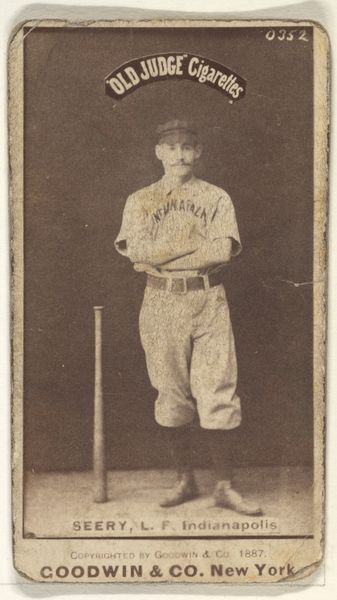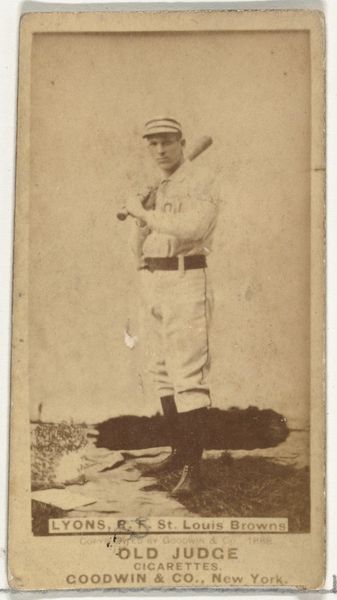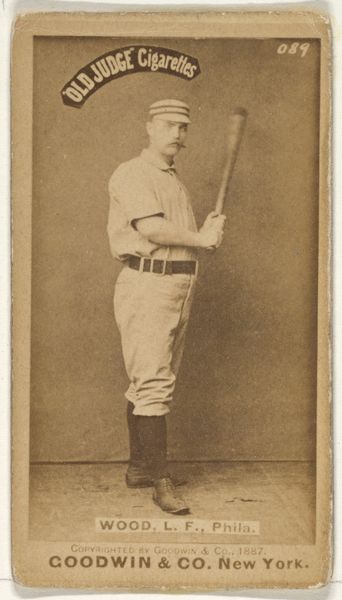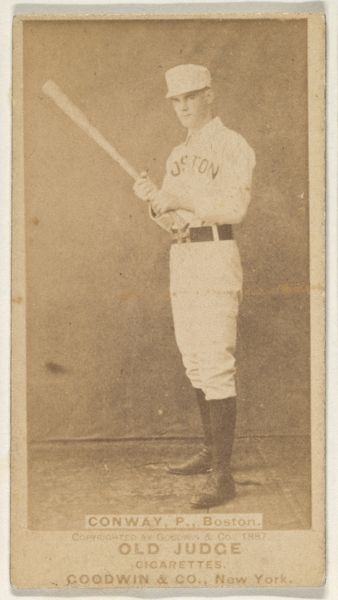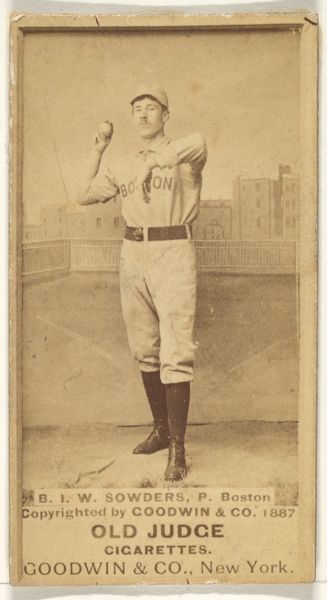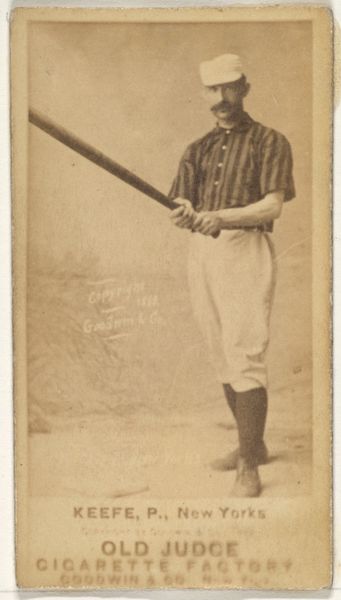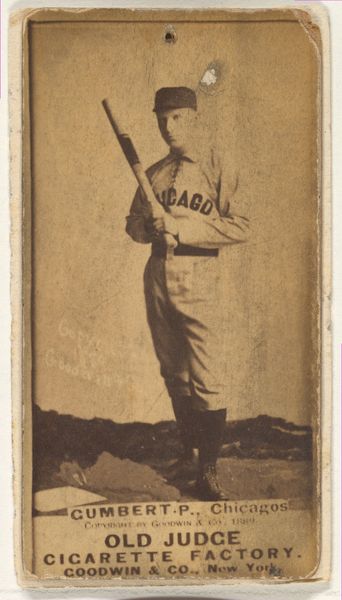
Jack McGeachey, Center Field, Indianapolis, from the Old Judge series (N172) for Old Judge Cigarettes 1887
0:00
0:00
drawing, print
#
portrait
#
drawing
#
aged paper
#
toned paper
#
yellowing background
#
photo restoration
# print
#
old engraving style
#
baseball
#
coffee painting
#
19th century
#
men
#
watercolour illustration
#
golden font
#
athlete
#
watercolor
Dimensions: sheet: 2 11/16 x 1 3/8 in. (6.9 x 3.5 cm)
Copyright: Public Domain
Curator: Let’s discuss this unusual portrait, "Jack McGeachey, Center Field, Indianapolis, from the Old Judge series," circa 1887, by Goodwin & Company. It’s part of a series of baseball cards originally packaged with Old Judge Cigarettes. Editor: Immediately, I'm struck by the sepia tones and the almost fragile quality of the paper. It gives it such a strong sense of history, like a faded photograph from a long-lost archive. Curator: Note the composition, the figure centered and deliberately posed. The sepia tone contributes to a visual unity, a cohesive whole where form follows function—a key element within formalism. The lines of his bat draw our eyes to McGeachey's face. Editor: But let’s consider what this image says about labor and commercialism at the time. It reduces this baseball player, McGeachey, to a commodity used to sell cigarettes, subtly normalizing tobacco consumption, and speaks volumes about the societal expectations and marketing tactics of that era. His position as a commodity to sell unhealthy things must be considered. Curator: While your interpretation is fascinating, doesn’t focusing primarily on that element obscure the compositional and formal decisions the artist made? How the framing and light sculpt McGeachey, drawing the viewers to the player as a hero, independent of his endorsement of a tobacco product? Editor: I would suggest we need to deconstruct how this “heroism” becomes another tool of mass deception in that epoch, masking exploitation with sports idolatry. This piece is very interesting to explore using semiotics, deconstructing signs and their coded social implications within this cultural context. Curator: I appreciate this new lens. Although it began as a discussion on aesthetic presentation, you pushed us toward examining social narratives encoded in baseball card production and consumerism in the late 19th century. Editor: Right, by analyzing baseball's ties to commerce, we can see its wider intersectional meanings that comment on society in that specific era.
Comments
No comments
Be the first to comment and join the conversation on the ultimate creative platform.
